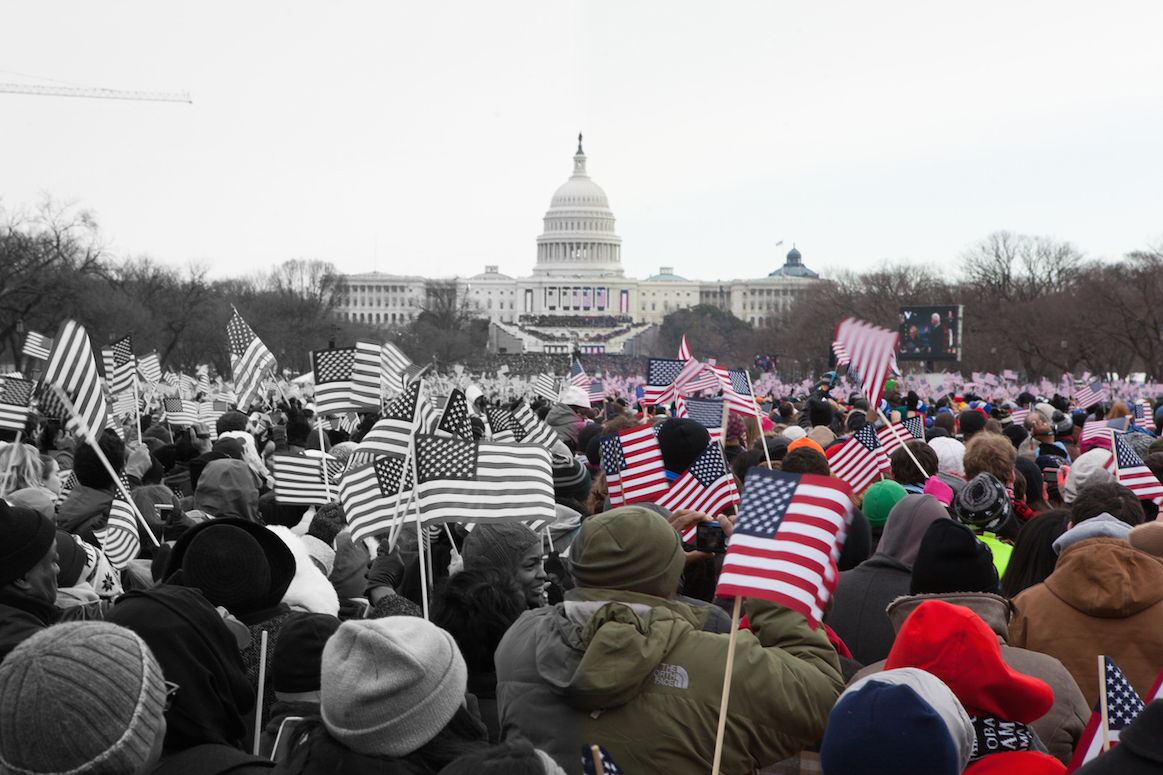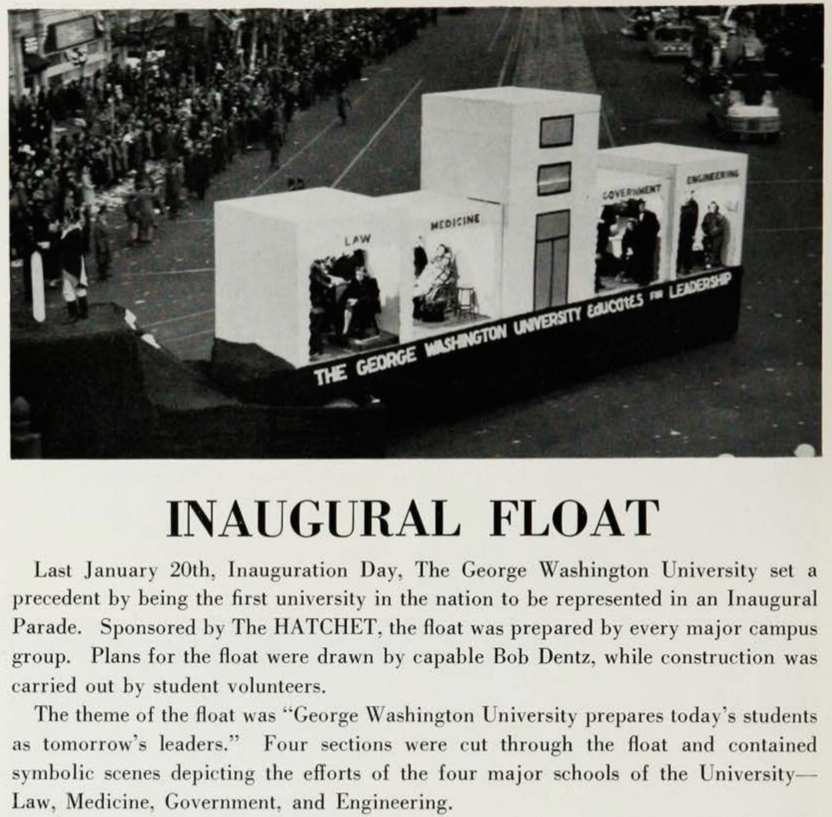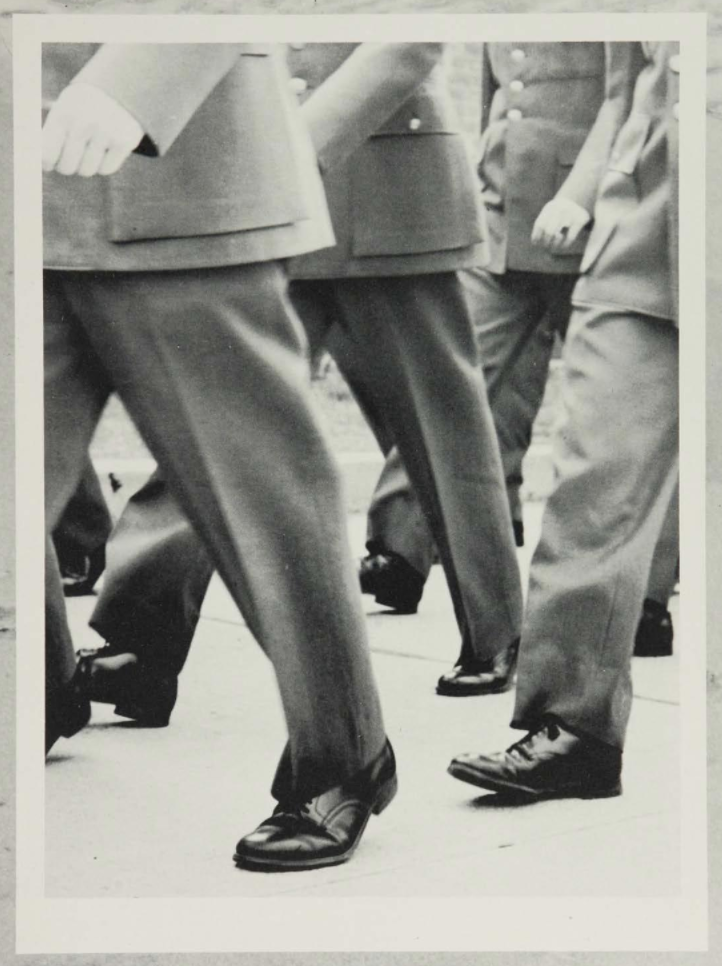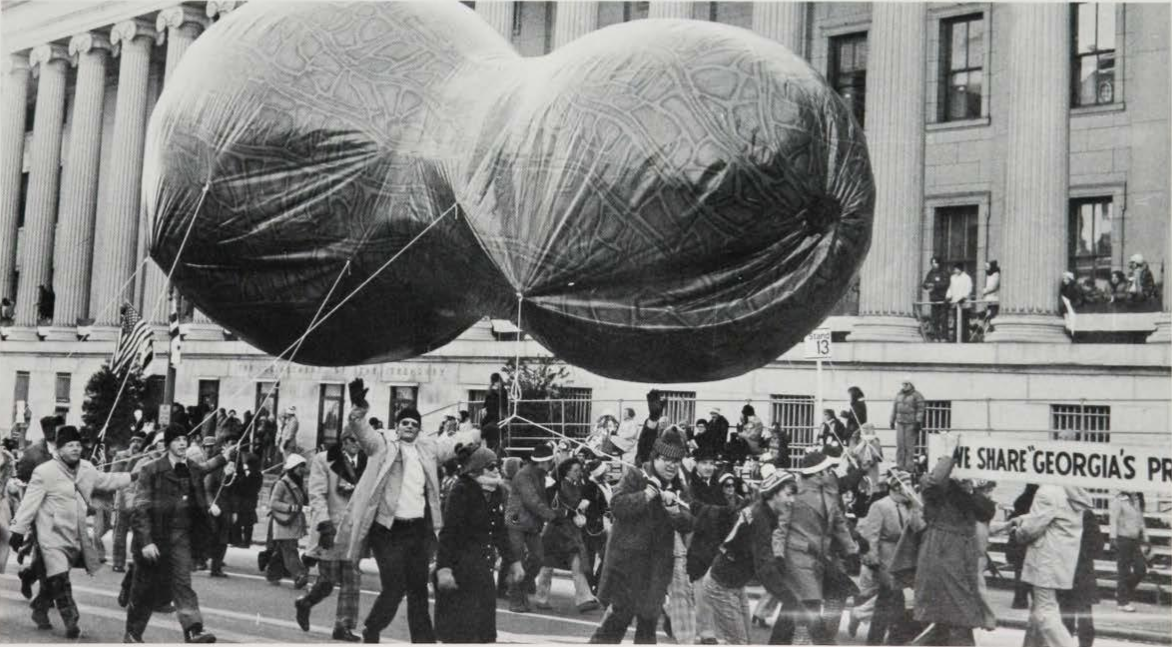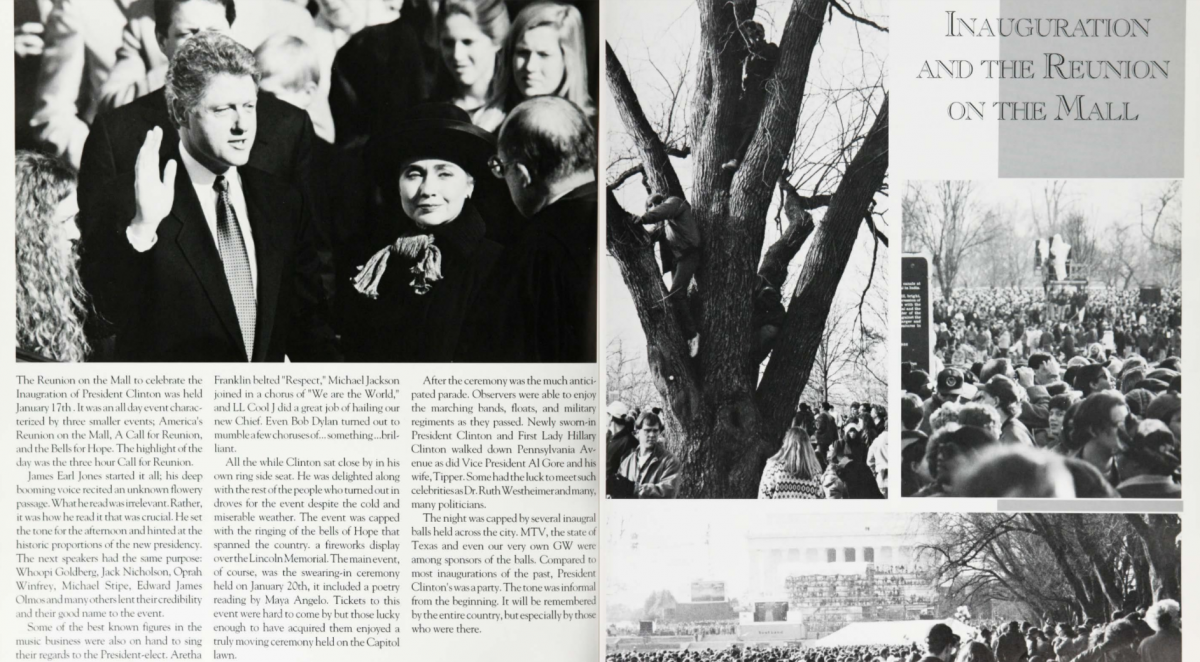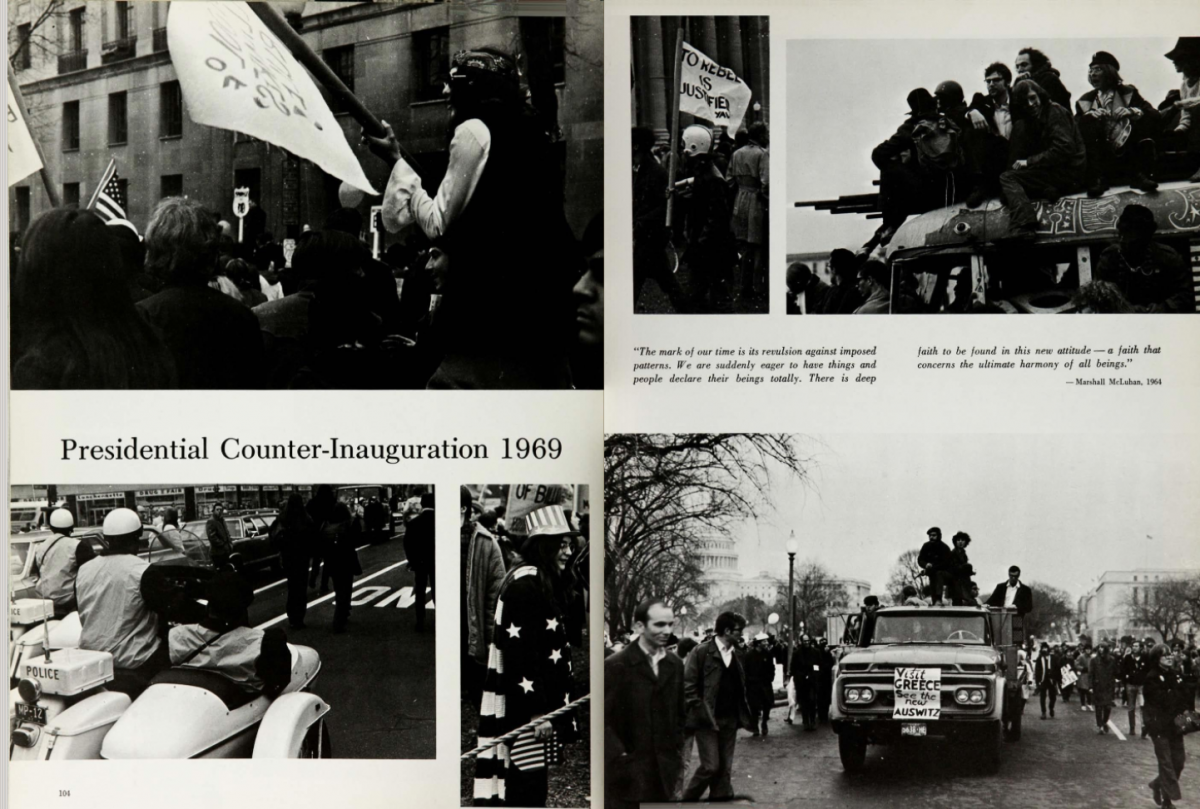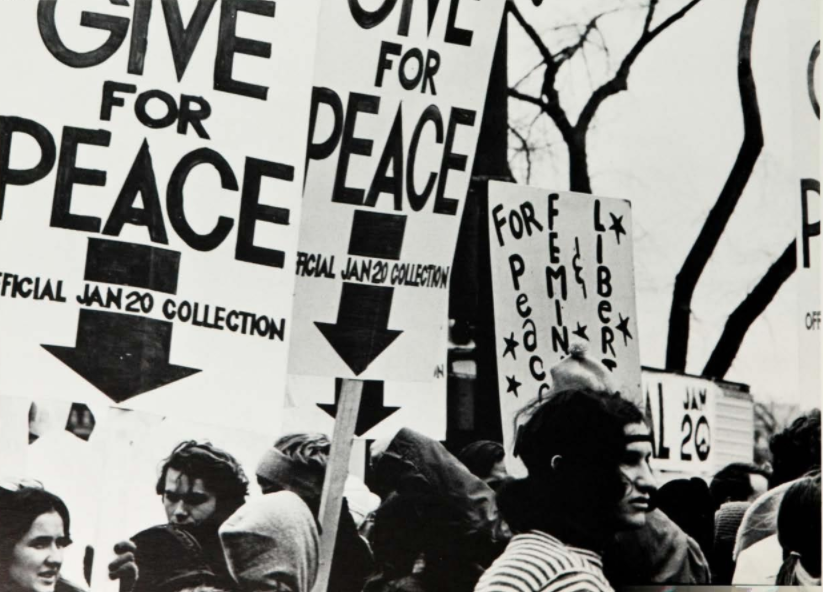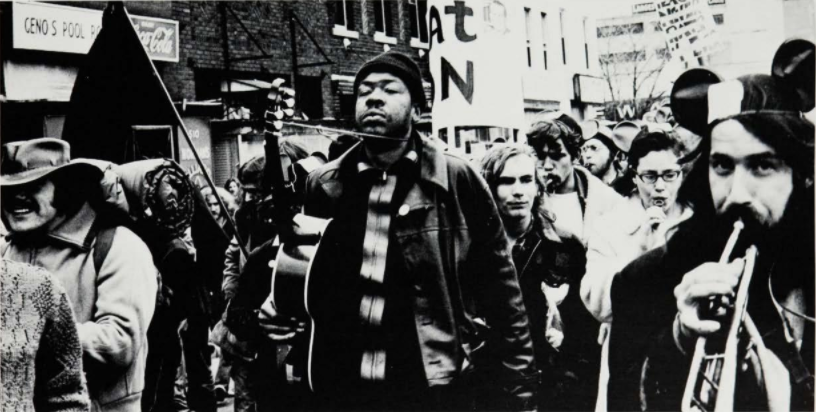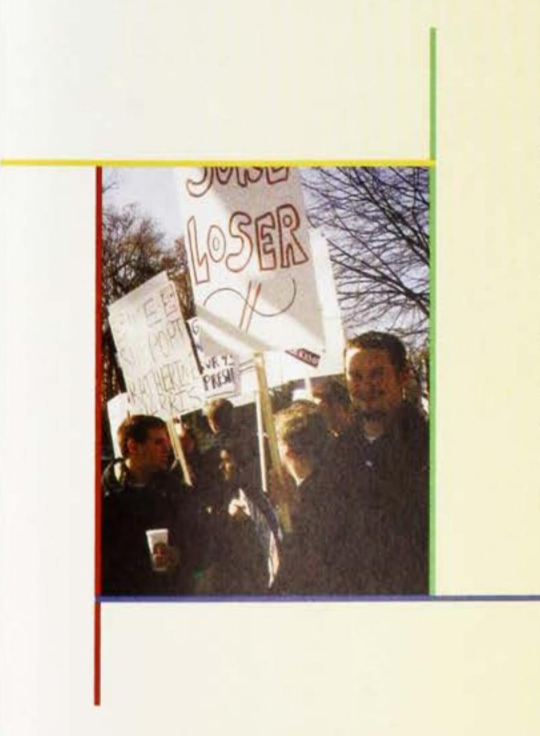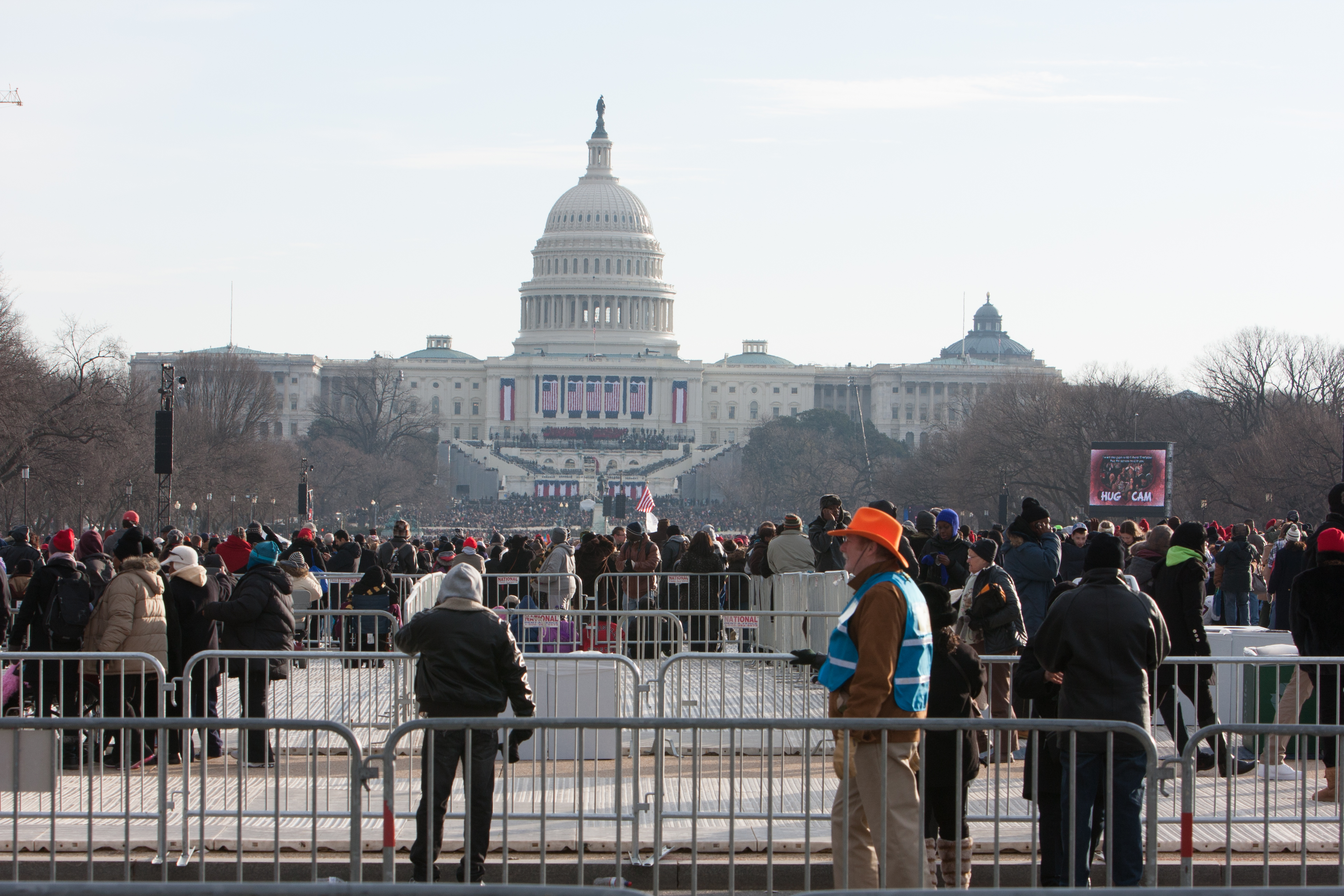Donald Trump will be sworn in as the 45th president of the United States Friday on the West Front of the U.S. Capitol, not far from the George Washington University’s Foggy Bottom Campus. The opportunity to witness and participate in the nation’s highest transfer of office comes once every four years to members of the GW community. To mark the occasion, GW Today tracked down 80 years of inaugural celebration and dissent from the University Archives’ online collection of GW’s Cherry Tree yearbook.
A GW organization was first officially featured in an inaugural ceremony in 1933, when the University Band marched in the first of Franklin D. Roosevelt’s four inaugural parades. (Cherry Tree, 1933)
In 1949, at the second inauguration of Harry S. Truman, the university became the first ever to be represented as an entity in an inaugural parade. The float represented what were then GW’s four major schools. (Cherry Tree, 1949)
An updated float would reappear in Barack Obama’s first inaugural parade 60 years later, this time with nine schools represented. (University Photography)
The university’s Air Force ROTC led a detachment of area ROTCs in Dwight D. Eisenhower’s 1953 inaugural parade... (Cherry Tree, 1953)
...while an enormous peanut floated down 15th Street to mark the inauguration of Jimmy Carter in 1977. (Cherry Tree, 1977)
The 1981 inauguration of Ronald Reagan was the first held on the west side of the Capitol building to provide more room for spectators.
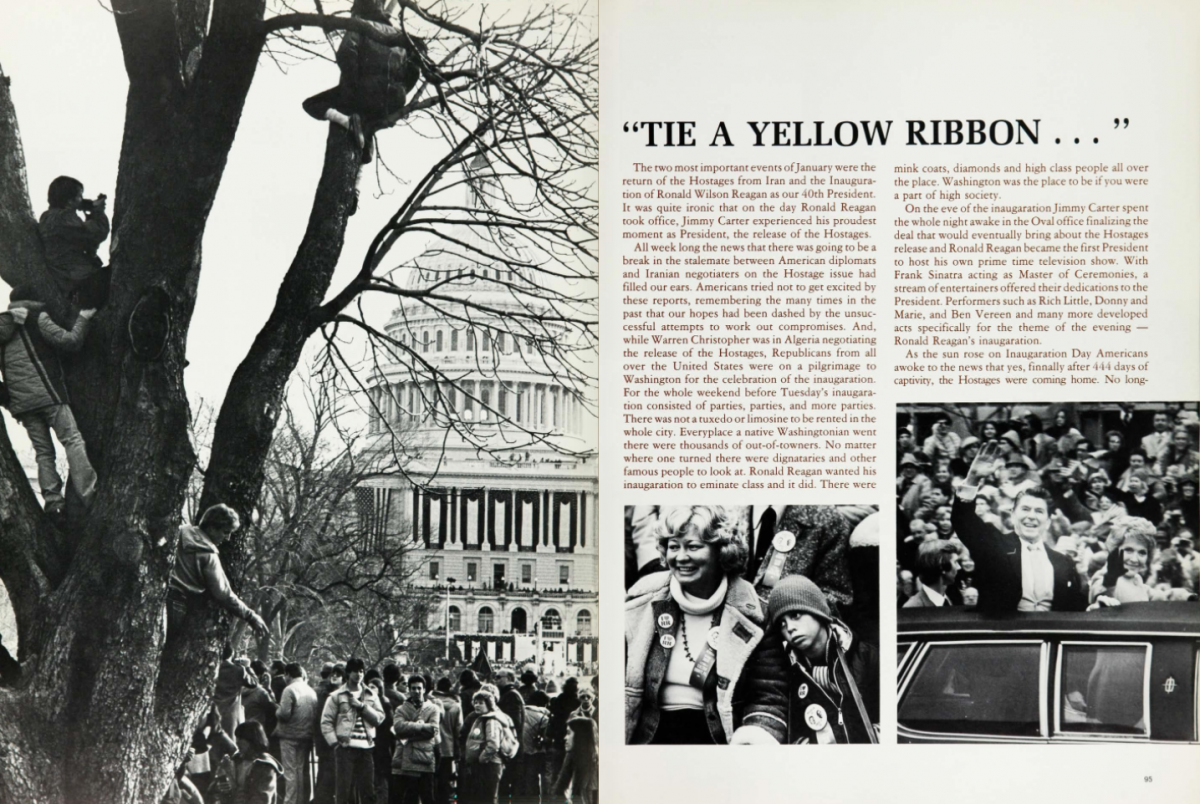 |
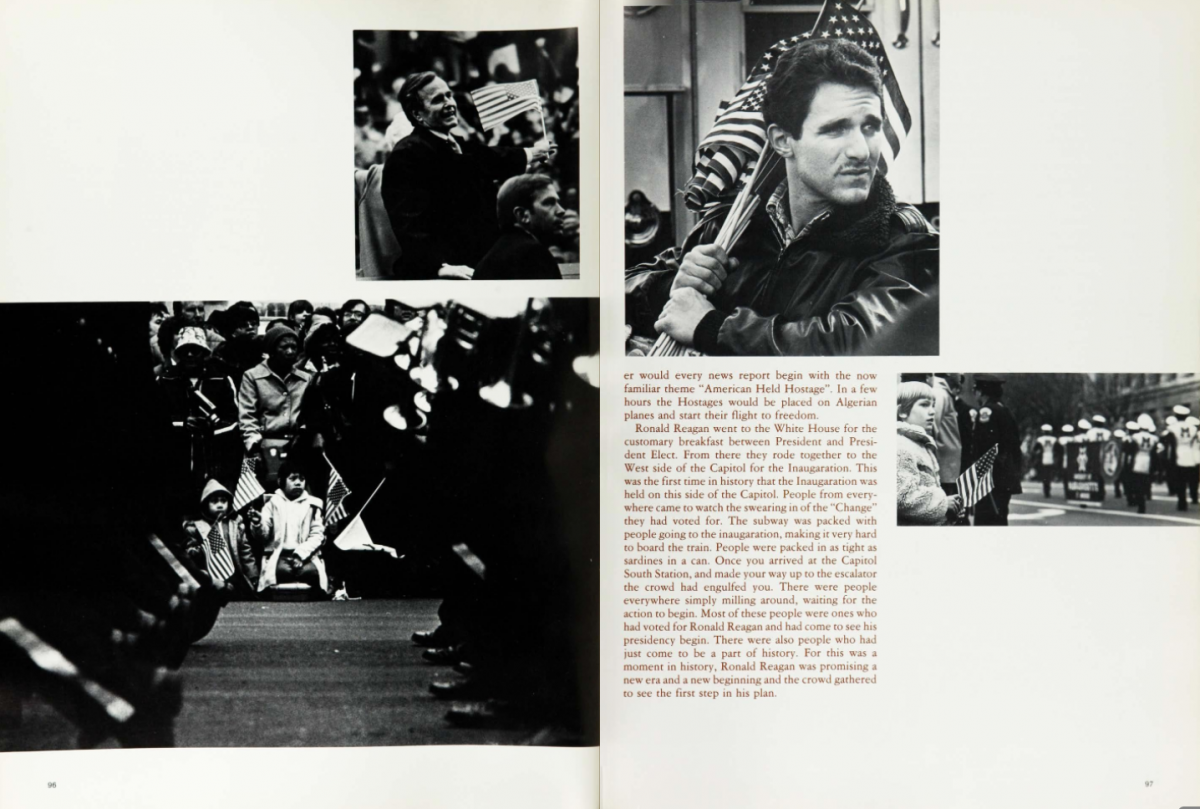 |
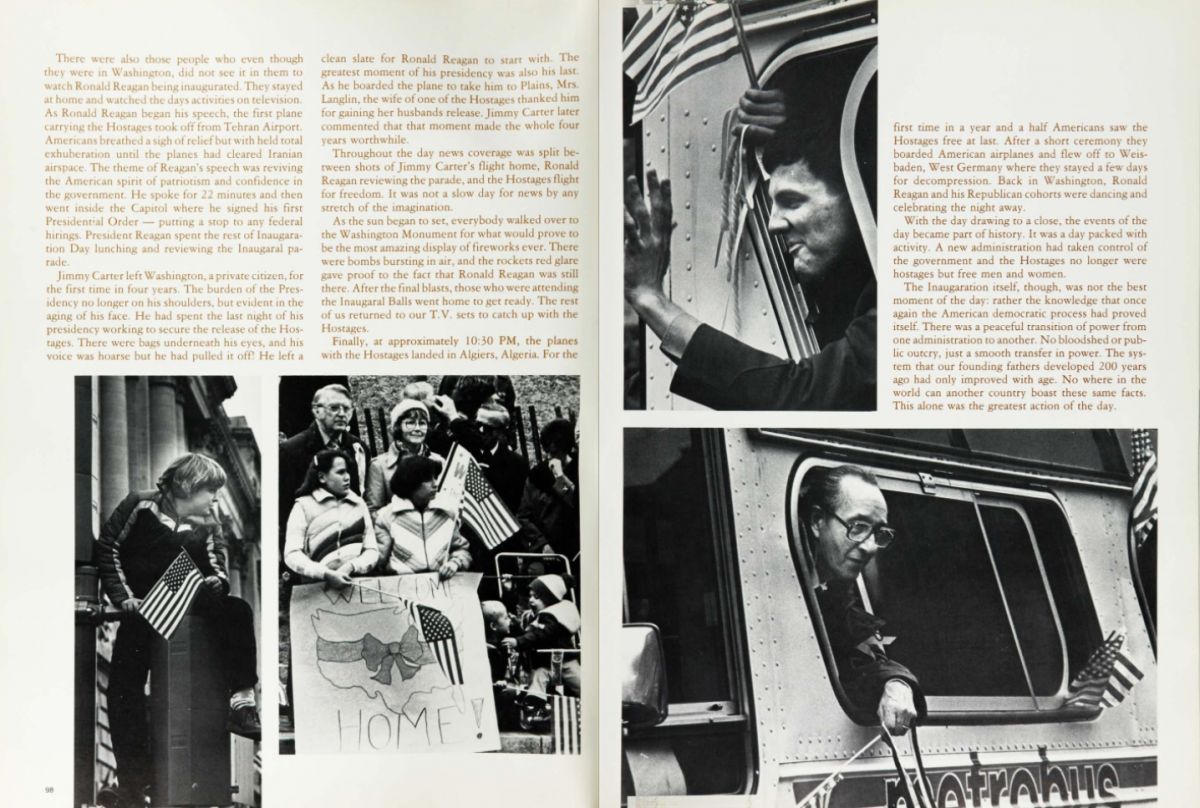 |
Celebrities like Frank Sinatra brought glitz to the proceedings. The Cherry Tree, which covered the ceremony and the concurrent release of 52 American hostages from Iran in a four-page feature, characterized it as “mink coats, diamonds and high class people all over the place.” (Click to enlarge.) (Cherry Tree, 1981)
GW hosted press briefings by the Presidential Inaugural Committee for Bill Clinton’s 1993 inauguration, which the yearbook characterized as “a party.” (Cherry Tree, 1994)
This year’s ceremony promises to be controversial, with major protests planned for that day and the next. Washington and GW have seen contentious inaugurations before.
The inauguration of Richard Nixon in 1969 at the height of the Vietnam War drew thousands of protesters, who threw eggs, bottles and smoke bombs at the presidential motorcade. Eighty-one were arrested. (Cherry Tree, 1969)
GW students also participated in protests at President Nixon’s second inauguration in 1973. (Cherry Tree, 1973)
George W. Bush took office in 2001 after an election whose results were contested all the way to the Supreme Court. Thousands of protesters and counter-protesters flooded the streets, including some from GW’s College Democrats and College Republicans.
Members of the College Republicans attend a counter-protest at the inauguration of George W. Bush. (Cherry Tree, 2001)
Most recently, students, faculty and staff celebrated the second inauguration of Barack Obama.
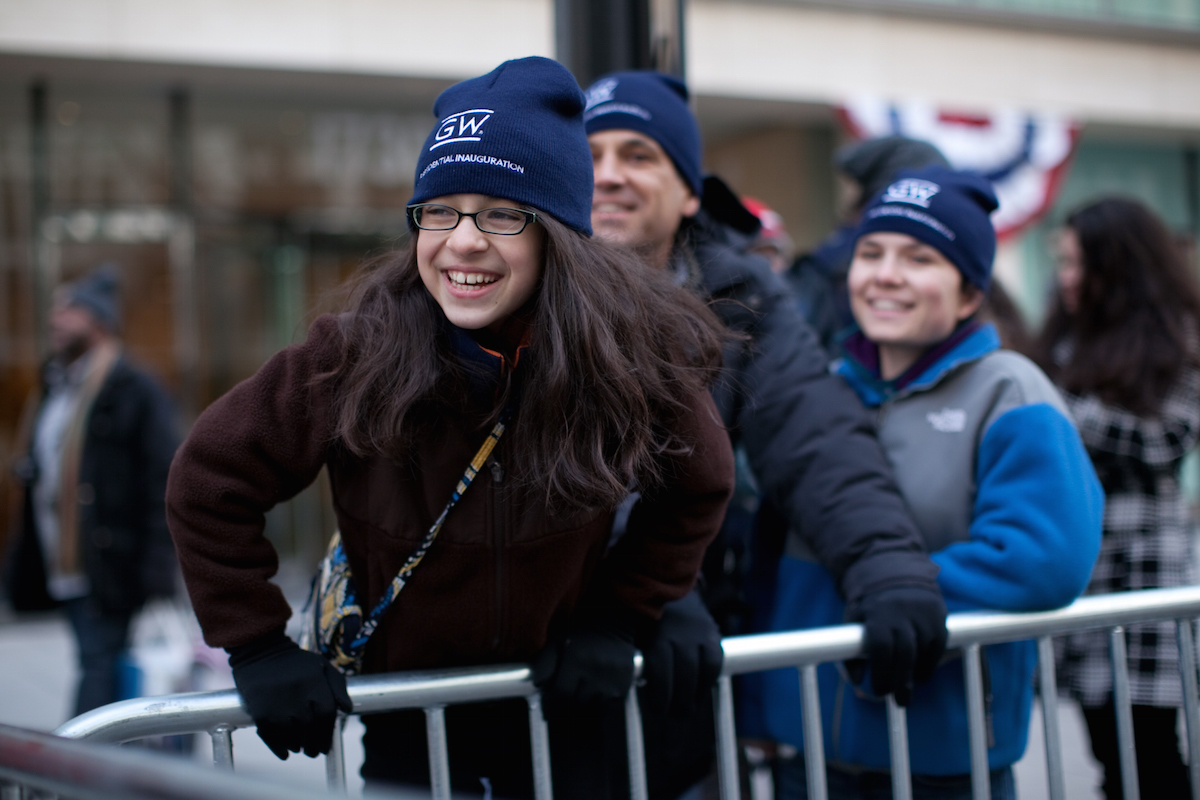
Provost Forrest Maltzman and his daughters were on the front lines for the 2013 inaugural parade. (Nick Gingold/GW Today)
“Where I come from, this kind of stuff doesn’t happen,” student Corey Schroer of Plymouth, Minn., told GW Today in 2013. “So just the whole atmosphere, the motorcades, the speeches, all the people—even going though the security checkpoints—was exciting. That’s something that doesn’t happen everywhere or every day.”


